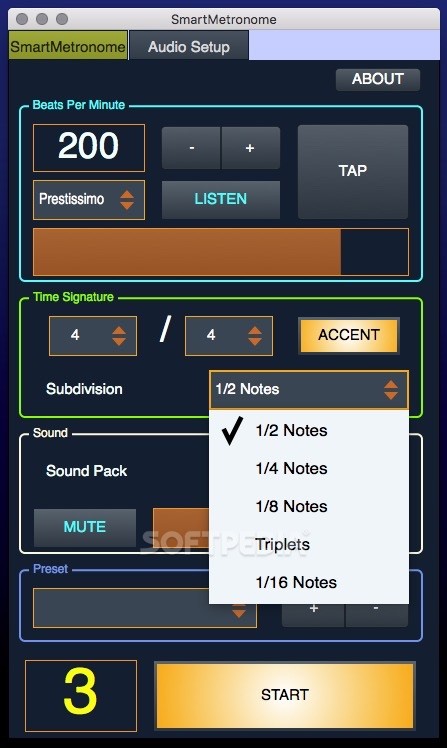

In this case, misaligned stimuli had identical detrimental effects on the variability of tapping to the metronome, whether spoken or sung. In a second experiment in this study, the stimuli were better matched: songs, either sung with lyrics, sung with a single syllable, or spoken with a regular pace, were presented. When misaligned, both music and speech led to synchronization interference by increasing the asynchrony between taps and metronome onsets, and music induced the largest asynchrony. When the metronome tones and the musical beats or stressed syllables were perfectly aligned, higher variability in the asynchronies between taps and metronome was found with the speech distractor compared to the musical one. The main task was to synchronize finger taps to a metronome while hearing highly isochronous computer-generated music or regularly spoken poems. In one of these, the influence of music and speech on entrainment was assessed through interference. Įntrainment to speech and music has rarely been compared behaviorally, with few previous studies in this regard. Of note, entrainment to rhythms, as modeled by oscillators, would apply not only to music but also to speech. Interaction of these oscillators would permit the extraction of regularities in complex rhythms that are periodic or quasi-periodic in nature, such as music. Multiple internal oscillators that are hierarchically organized in terms of their natural frequency or period are likely involved in this process. According to this theory, alignment between internal neural oscillators and external rhythms enables listeners to anticipate recurring acoustic events in the signal, allowing for maximum attentional energy to occur at the onset of these events, thus facilitating a response to these events. Currently, the predominant models of entrainment are based on the dynamic attending theory (DAT). Entrainment can be broadly defined as the tendency of behavioral and brain responses to synchronize with external rhythmic signals. This coupling between movements and music is achieved through entrainment. In early infancy, children already show spontaneous movements to music. Most people will spontaneously nod their heads, tap their feet, or clap their hands when listening to music. Music is quite unique in the way it compels us to engage in rhythmic behaviors. Therefore, a beat-finding deficit may affect periodic auditory rhythms in general, not just those for music. The findings support the idea that acoustic periodicity is a major factor in domain-general entrainment to both music and speech. In addition, participants from both groups exhibited more inter-tap variability to natural speech than to regularly spoken and sung sentences. The results showed that beat-deaf individuals synchronized their taps less accurately than the control group across conditions. The beat-deaf participants and their matched controls were required to align taps with the perceived regularity in the rhythm of naturally spoken, regularly spoken, and sung sentences. In the current study, we tested the hypothesis that individuals who display a severe deficit in synchronizing their taps to a musical beat (called beat-deaf here) would also experience difficulties entraining to speech. Start at a slow practice tempo and gradually increase the tempo when you can play the piece without any mistakes.The rhythmic nature of speech may recruit entrainment mechanisms in a manner similar to music. Increase the difficulty by setting the numbers to 1/1 (played/muted), 2/2, and 4/4 respectively. Play a piece you know well and keep the tempo in the muted bar.

Activate the mute function at the bottom, and set the metronome to play 3 bars and mute 1 bar. Set the metronome to the indicated tempo, establish the tempo, and stop the metronome before you start playing. Find the tempo indicated in the score.You can always select 1 if you don't know the number of beats per measure. Most music has 4, 3 or 2 beats per measure, in music notation denoted by time signatures such as 4/4, 3/4, 2/4 and 2/2.

Select the number of beats per measure at the bottom. Alternately, you can tap the tempo by clicking the "Tap tempo" button at the desired tempo or by using the "t" key on your keyboard. Start by selecting a tempo using the slider or, the left and right arrow keys on your keyboard. It is also used in live performances and recording studios to ensure an accurate tempo throughout the performance or session. A tempo marking of 60 BPM equals one beat per second, while 120 BPM equals two beats per second.Ī metronome is commonly used as a practice tool to help maintain a steady tempo while learning difficult passages. The pulse is measured in BPM (beats-per-minute). A metronome is a device that produces a steady pulse to help musicians play in time.


 0 kommentar(er)
0 kommentar(er)
